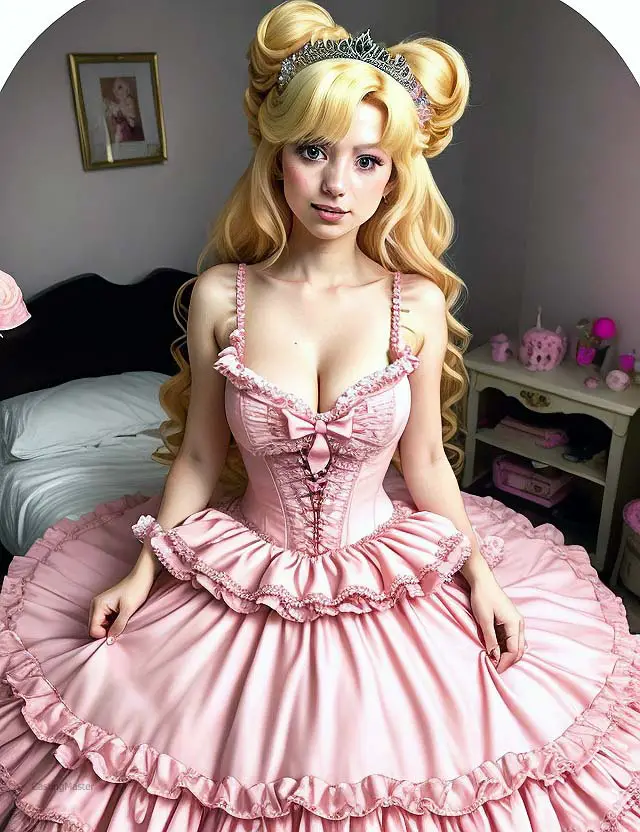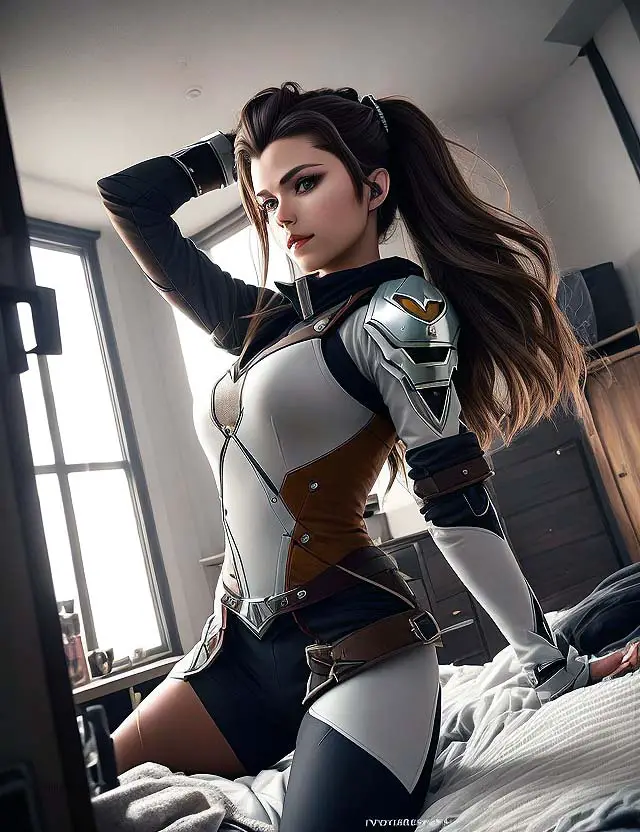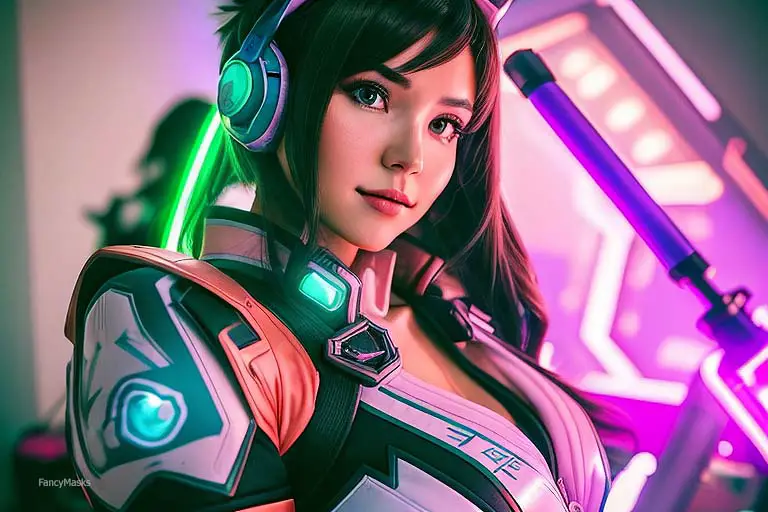Cosplay, short for costume play, is a popular hobby that involves dressing up as characters from different media, including anime, video games, and comic books. It’s a great way to express creativity, fandom and gather with like-minded people at events such as conventions.
When it comes to creating a cosplay outfit, however, choosing the appropriate materials can make or break the final product. If you’re looking for something a little more for people just starting out, we have a guide for creating your first cosplay.
Why is choosing the right material important?
Choosing the right material is crucial because it affects both the overall aesthetic appearance and comfort level of the costume. The wrong fabric can cause discomfort if it’s too scratchy or hot during wear, while the wrong plastic material for armor may result in a bulky or ill-fitting costume that doesn’t match the character’s look.
Moreover, materials play an essential role in making sure that costumes are durable enough to withstand wear and tear. Being able to select high-quality materials is key not only in ensuring that your costumes look great but also last long enough to be reused.
Understanding Different Material Types
When it comes to selecting materials there are two main categories; fabrics and hard materials (such as foam) These categories contain multiple sub-categories with varying options such as texture, color range & durability rating.

Fabrics
Fabrics refer to any soft materials used for making clothing items. Some common types of fabric include cotton (lightweight), silk (shiny), velvet (soft), spandex (stretchy), polyester (durable).
Generally speaking heavier fabrics will provide more structure but less range of motion whereas lighter fabrics tend toward greater flexibility but less structure Many cosplays require intricate tailoring that requires specific colors and intricate detailing on their garments hence why being able to pick out the right material is very important, particularly when it comes to matching the colors and patterns of your character’s outfit.
Hard Materials
Hard materials are often used for creating armor or other accessories that complement the costume. Common materials include EVA foam (lightweight), Worbla (malleable), and PVC pipes (sturdy). To best use hard materials, you need to consider factors like how light or heavy they are, flexibility, and potential for any required shaping work.
Materials for Clothing
Fabrics suitable for different types of clothing (e.g. cotton, satin, spandex)
Choosing the right fabric is crucial when it comes to creating a cosplay costume that looks authentic and feels comfortable to wear. Cotton is a versatile fabric that works well for many cosplay costumes, especially those with a more casual or traditional feel. Satin has a lustrous finish and is perfect for costumes that require an elegant or luxurious look.
Meanwhile, spandex is ideal for tight-fitting costumes like superhero suits or bodysuits. Other fabrics to consider include silk, chiffon, wool, and leather.
Silk can add an extra layer of elegance to your costume while chiffon can create a flowing or billowing effect. Wool can be great for costumes set in colder climates while leather can add toughness to any outfit.
Considerations for color, texture, and durability
When selecting the fabric for your cosplay costume, you should also consider the color, texture and durability of the material. Choosing colors that are accurate to the source material can make your cosplay stand out and appear more authentic.
You should also take into account the texture of your chosen fabric as this can help bring out specific details in your costume. Durability is also important when selecting materials because some fabrics may fray easily after extended wear or washing.
Be sure to choose fabrics that will hold up well over time so you don’t have to constantly repair or replace parts of your costume. Another thing to keep in mind is whether you need stretchy material or not depending on how active you’ll be in your cosplay costume.
Fabrics like spandex are ideal if you’ll be performing acrobatic stunts while cotton may be better suited if you plan on spending most of your time standing around in character. Choosing the right fabric is vital when it comes to creating a convincing cosplay costume.
Consider factors such as color, texture, durability, and stretch when selecting materials for your clothing. By paying attention to these important elements, you’ll be able to create a costume that looks great and feels comfortable to wear at the same time.

Materials for Armor
Foam and Thermoplastics
When it comes to making cosplay armor, foam and thermoplastics are the go-to materials for many cosplayers. EVA foam is a versatile material that can be easily shaped with a heat gun and cut with a utility knife.
It’s also lightweight and durable, making it ideal for creating armor pieces that need to be worn for extended periods of time. Worbla is another popular choice for armor construction.
This thermoplastic sheet can be molded into different shapes and textured to create intricate designs. Unlike EVA foam, Worbla is not as lightweight, but it offers greater durability, allowing for more heavy-duty cosplay costumes.
Tools Needed
To shape and detail foam or thermoplastic armor pieces, you’ll need specific tools on hand. A heat gun is required to mold EVA foam or Worbla into the desired shape. A utility knife or craft knife will help with cutting out the patterns from the material.
For finer details or intricate designs, a Dremel tool or rotary tool can be used to carve away excess material or add texture to the surface of the armor piece. Sandpaper is also essential to smooth out rough edges after cutting or shaping.
In addition to these basic tools, it’s important to have safety equipment on hand when working with foam or thermoplastics. Gloves should be worn when handling heated materials, as well as a respirator mask when sanding down any rough edges.
Alternative Materials
While foam and thermoplastics are popular choices for constructing cosplay armor pieces, there are alternative materials that can be used as well. For example, some cosplayers use cardboard or paper mache as a base before adding layers of resin or fiberglass over top. Metal sheets like aluminum can also be used to create particularly sturdy pieces of armor, although this approach requires specialized tools and experience working with metal.
Regardless of the materials used, it’s important to keep the weight and distribution of weight in mind when creating armor pieces. Heavy armor pieces can become uncomfortable or even painful to wear for extended periods of time, so it’s essential to balance out the weight across the costume.
Finishing Touches
Once your armor pieces have been shaped and detailed, they’ll need to be painted and finished off. Spray paint is an easy way to add color, though acrylic paints can also be used for more intricate designs.
To create a metallic finish on your armor, you can use metallic spray paints or rub-n-buff wax. Weathering techniques like dry brushing or sandpaper distressing can also add texture and depth to your finished cosplay piece.
Remember that small details like rivets or studs can really make a difference in adding authenticity to your cosplay armor set. Look for these embellishments at your local craft store or online retailer.

Materials for Props
Common Materials Used in Prop Making
Props are an essential part of any cosplay costume, as they bring characters to life and add a sense of realism to the overall look. When it comes to choosing materials for props, there are many options to consider. Some of the most commonly used materials include wood, PVC pipe, and resin.
Wood is a versatile and affordable material that can be easily shaped with the right tools. It’s perfect for creating props such as swords or shields that require a sturdy structure.
PVC pipe is another popular choice, as it’s lightweight and easy to work with. It’s often used for creating weapons or other long, cylindrical objects.
Resin is a more advanced option, but it allows for intricate details and shapes that can’t be achieved with wood or PVC pipe alone. It can be molded into any shape desired and then painted to create realistic textures and finishes.
Other materials to consider include foam board, polystyrene foam, and cardboard. These materials are ideal for creating more delicate props such as wings or masks.
Techniques for Painting and Weathering Props
Once you’ve chosen your materials for your prop, the next step is painting and weathering them in order to achieve a realistic look. There are several techniques you can use depending on the type of prop you’re making.
For wooden props such as swords or shields, start by sanding down any rough edges or imperfections in the wood surface. Next, apply a base coat of paint using acrylic paint in your desired color.
Once dry, use darker shades of paint on top to mimic wear-and-tear on the prop over time. For PVC pipe props like weapons or staffs, first sand down any rough edges on the pipe itself before applying a base coat of paint using spray paint designed for plastic surfaces.
You can then add details and weathering effects using a combination of dry brushing and sponging techniques. When working with resin, start by sanding down any rough edges or imperfections in the surface.
Apply a primer coat before adding layers of paint to create the desired color and texture. Once dry, use sandpaper or steel wool to create scratches or scuffs on the surface for a more realistic look.
Overall, it’s important to remember that props are an extension of your cosplay costume and should be treated with as much care and attention as any other aspect of the outfit. Take your time in selecting materials and painting techniques to ensure that your props complete your look in a realistic and convincing way.
Accessories and Embellishments
When it comes to cosplay, the devil is in the details. Adding accessories and embellishments to your costume can take it from good to great. There are a plethora of options for adding details to costumes, including beads, sequins, embroidery, and more.
Beads and Sequins
Beads and sequins are a common way to add sparkle and shine to your costume. When choosing beads or sequins, consider the size and color of the pieces.
Smaller beads or sequins work well for intricate designs, while larger pieces are perfect for making a statement. When attaching beads or sequins to your costume, there are several options.
One popular method is using glue specifically designed for crafting. Alternatively, you can sew them onto your costume by hand or with a sewing machine.
Embroidery
Embroidery is an excellent way to add texture and depth to your costume design. This technique involves stitching thread onto fabric in various patterns or designs.
To get started with embroidery on your costume, you’ll need an embroidery hoop, needle, thread (usually floss), and fabric that won’t fray easily. You can purchase pre-designed patterns online or create your own custom design.
Selecting Adhesives
The right adhesive can make all the difference when attaching accessories or embellishments to your costume. There are several types of adhesives available on the market that work well with different materials.
If you’re working with fabric-based materials like cotton or silk, fabric glue is an excellent option. For heavier materials like foam or leather used in armor construction, hot glue may be more appropriate.
Tips on Choosing Adhesives
- Consider the weight of the materials you are attaching
- Ensure the adhesive is compatible with your costume materials
- Test the adhesive on a small area before applying to the entire costume
Selecting Fasteners
In addition to adhesives, fasteners like buttons, snaps, and zippers are essential for securing accessories or embellishments onto your costume. The type of fastener you choose will depend on several factors, including the size and weight of your accessory or embellishment. For larger or heavier items, consider using a combination of adhesives and fasteners to ensure stability.
Tips on Choosing Fasteners
- Select a fastener appropriate for your costume material (e.g., snaps work well with leather)
- Consider durability and how often you’ll be using the fastener
- Ensure that the color of the fastener matches your costume design as closely as possible
Adding accessories and embellishments is an excellent way to take your cosplay to the next level. Whether you’re using beads and sequins for sparkle or embroidery for texture, there are endless possibilities for enhancing your design. When selecting adhesives and fasteners for attaching these details, remember to consider durability and compatibility with your costume materials.
Conclusion
Choosing the right materials for your cosplay can make or break your costume. It’s important to consider the function, durability, and aesthetic appeal of each material before making a decision. To recap, fabrics such as cotton and satin are great options for clothing pieces while foam and thermoplastics like EVA foam and Worbla work best for armor.
For props, you may want to experiment with wood, PVC pipe, resin or other materials that suit your project’s needs. Adding accessories and embellishments can really make a costume stand out.
Don’t be afraid to add beads, sequins or embroidery to your costume pieces! You’ll also want to choose appropriate adhesives and fasteners that will hold up throughout the con.
Remember that it’s okay to experiment with different materials when creating your cosplay! While there are tried-and-true options out there for each category of material you’ll use in your cosplay project, some cosplayers love the challenge of tinkering with new ideas they’ve thought up themselves.
Selecting materials that are suitable for your cosplay is essential if you want to create an impactful costume. Take some time to research what types of materials work best in different situations and don’t be afraid to try something new!




